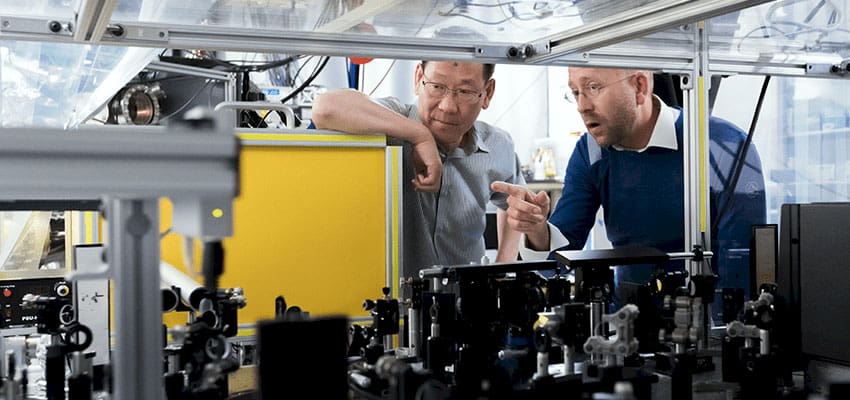How times change – it wasn’t many years ago that Australian Industry Capability plans within tenders were on the periphery of a prime’s win strategy for major Defence contracts.
Fast forward to today and it’s clear that a company’s approach to AIC development must now be a fundamental consideration within win strategy planning. The incorporation of industry as a fundamental input to capability, the introduction of the Minister for Defence Industry, the foundation of the Centre for Defence Industry Capability and a raft of industry development policy documents and plans have changed everything.
This focus continues with the Defence Industry Minister’s announcement regarding the establishment of an independent AIC audit program, holding primes to account for delivering against their AIC strategies.
Yet our industry conversations indicate that many organisations still struggle to develop a strategy that meets the expectations not just of Defence, but critically the Australian SME community. So how can companies develop AIC strategies that deliver the ultimate win, win, win – for industry, Defence and of course themselves?
Having been at the coalface of AIC strategy development for a number of Defence industry wins, here are the six key elements we regularly advise primes to focus on.
1. SME-focused engagement
This is the easy one – providing the opportunities for Australian industry to engage with you. Industry briefings, supported by organisations such as the Australian Industry & Defence Network and the Industry Capability Network, backed by a formal engagement mechanism to register interest, is now often a minimum engagement strategy. However, this merely opens the door. How your people actually engage with industry will determine how likely they are to walk through it. This softer side of human-to-human interaction should not be overlooked.
2. Identify specific opportunities
This is the difficult one – the key is to remember that the C in AIC stands for capability, not content. A focus on content can create a mindset of looking primarily for low-hanging fruit to maximise opportunity for Australian industry based on known and current competencies.
However, the Commonwealth wants to invest in capability development. Proactively identify opportunities for genuine capability development within Australia. For example, can you help establish partnerships with international OEMs where Australian SMEs can initially install, maintain and support equipment, but over time develop a sovereign capability to design and manufacture? Further, these opportunities don’t all have to be external. Development of your own workforce through transitioning overseas capability back to Australia is often a valuable strategy.
3. Build powerful partnerships early
AIDN CEO Brent Clark recently promoted the benefits for primes of early engagement and collaboration with the domestic supply chain. This accords with what we have observed. Companies that have stronger AIC strategies build relationships not just with their strategic partners for specific Defence projects, but also with the broader SME community. This practice builds strategies that benefit from a broader collective wisdom and delivers more tangible industry development initiatives – rather than vague promises.
4. Focus on supplier relationship management
Many companies still make it difficult for SMEs to engage and then work with them. Some examples are complex organisational structures with no clear point of entry, burdensome pre-qualification processes and unfavourable conditions of engagement.
These are all indicative of transactional relationships, based on the notion that SMEs should be grateful simply for the opportunity to work on the project. By adopting a more strategic approach to supplier relationship management, companies will unlock important benefits for the AIC strategy development including lower overall cost of delivery of projects, better efficiency, better communication and the identification of continual improvement opportunities.
5. Link AIC strategies with your corporate strategy, or even better – structure
When developing their AIC strategies, we often see companies struggle with Indigenous and veteran engagement, as well as research, development and innovation components. While various company initiatives may span these areas, the programs are often developed separately from the capture plans developed for major opportunities.
This risks AIC plans being a regurgitation of national or international corporate programs, with no clear linkages to the specific opportunity being pursued. The Commonwealth is a sophisticated buyer and easily recognises a company using ‘proposal speak’ to mask the fact that they don’t have much relevant to say about a specific project. A closer integration of corporate and AIC planning activities inevitably helps companies develop more compelling AIC strategies.
In a recent conversation on this very topic, NSM General Manager Joe Smith suggested an even more fundamental approach whereby through purposeful design, organisations can be structured to maximise AIC and avoid conflicts of interest between self-performing or outsourcing work. Through hardwiring AIC development into their DNA, companies avoid the issues associated with retrofitting and selling AIC after the fact.
6. Build credibility
Henry Ford’s quote that “You can’t build reputation on what you are going to do” is particularly relevant to AIC strategies. It is important for companies to build the credibility of their AIC strategies through activities such as:
- Providing evidence the first steps have already been taken – for example by naming partners, describing your relationships, providing proof of agreements
- Delivering on what you commit to – your existing AIC plans are just as important as any being developed for the next opportunity. Proven performance against existing commitments will inform and influence the Commonwealth’s evaluation.
- Celebrating AIC success and developing cases studies – delivering great outcomes for Australian industry is worthy of celebration and communication. Don’t waste the opportunity to capture these through case studies that reinforce your ability to deliver.
- Being altruistic – it’s one thing to provide opportunity for Australian industry within your own company and global supply chain, but what about providing opportunity for another company, even if they are a competitor? This type of selfless behaviour takes courage, but it certainly builds credibility about your commitment to Australian industry.
Building your credibility elevates AIC strategies from a selection of promises made to win a contract, to being a compelling answer to the question ‘Why you?’
AIC strategies – delivering on the big picture
Through focusing on these six areas, companies can develop AIC strategies that develop a clear point of difference; through specific and tangible initiatives, partnerships, plans and commitments. With such strategies in place, companies can achieve the triple win that delivers benefits for:
- The Commonwealth – more capable and competitive Australian industry, better program outcomes, more Australian jobs and increased sovereign industry capability.
- Australian SMEs – increased project involvement, new market opportunities through global supply chains and a greater ability to invest.
- Primes – developing more competitive solutions for individual opportunities, longer term benefits associated with delighting their Commonwealth client and mutually beneficial partnerships with Australia’s best SMEs.







